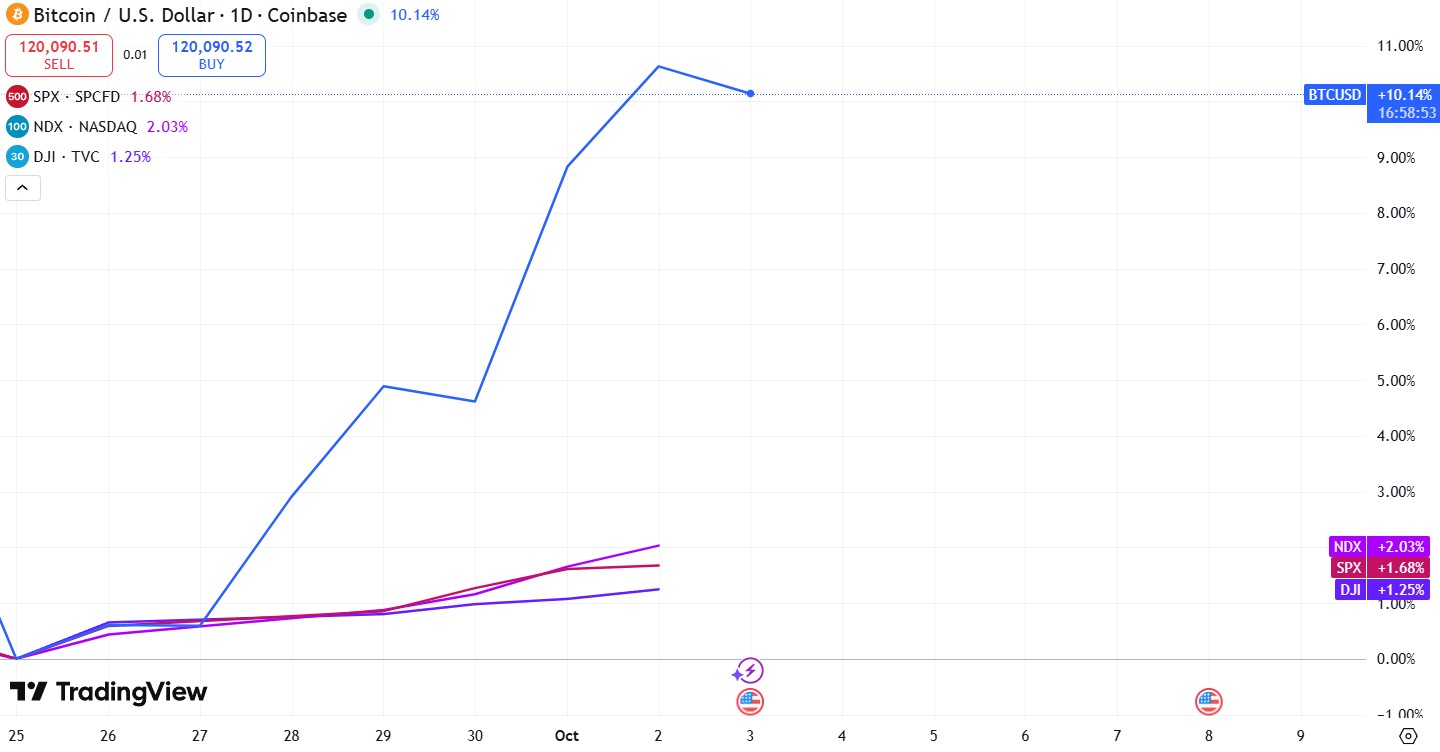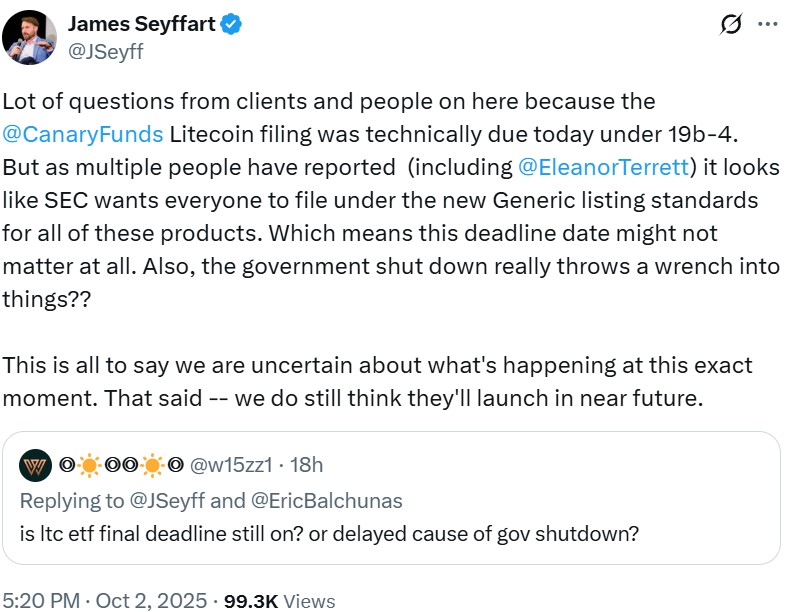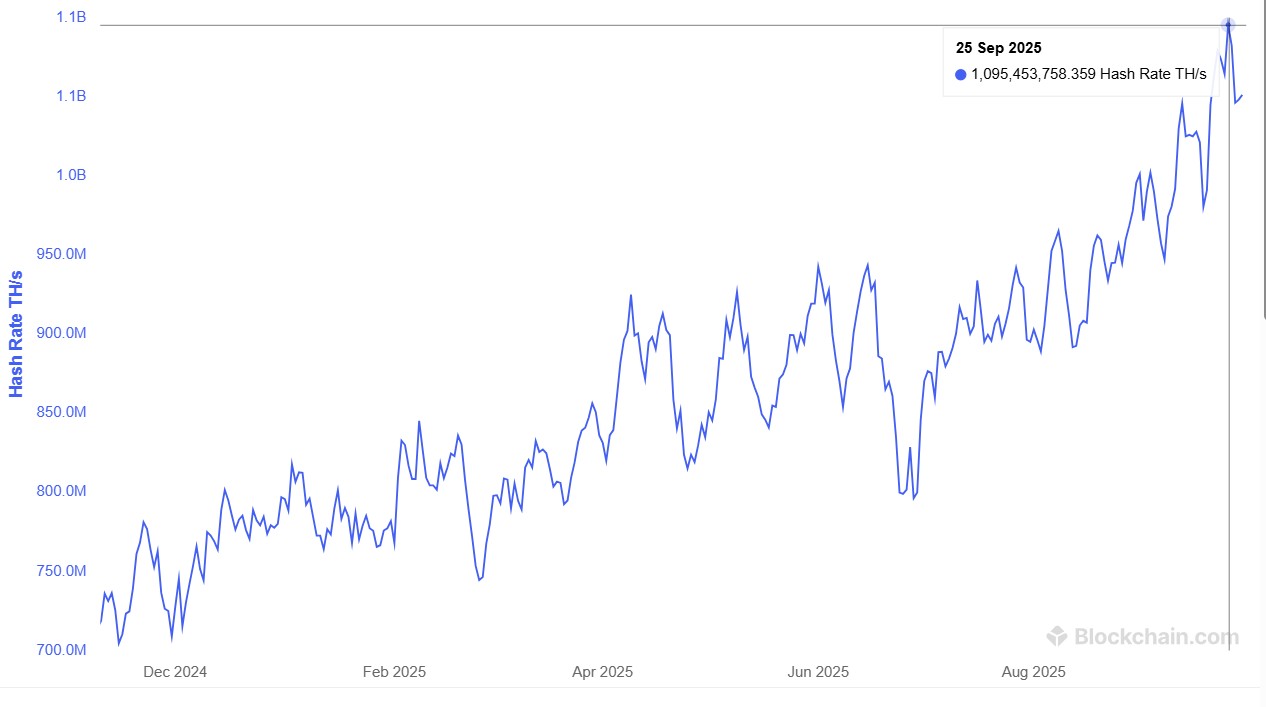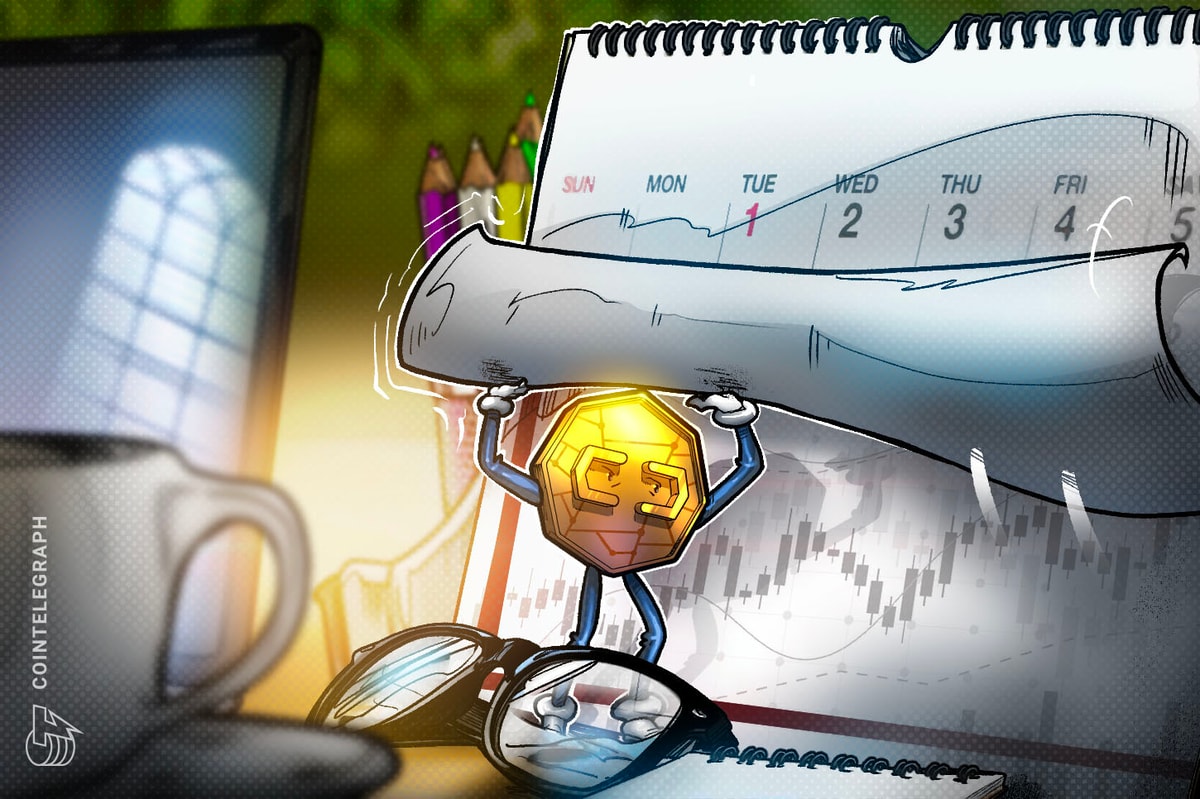Bitcoin Defies US Shutdown, Brazil Welcomes Miners: Global Express
Bitcoin (BTC) surged into October, defying a US government shutdown that has left altcoin exchange-traded fund (ETF) applications in limbo.
But while markets welcomed the arrival of “Uptober,” the headlines elsewhere were dominated by regulatory battles and policy experiments.
Two defendants pleaded guilty in what UK police called the world’s largest crypto seizure, a case that has left courts wrestling with whether victims should be repaid at today’s Bitcoin value or at what they lost years ago.
Brazilian energy companies are courting miners to soak up excess power as lawmakers in New York push new taxes that could drive the industry out of the state.
In Europe, stablecoins face fresh warnings from regulators just as banks and the ECB advance their own euro-based alternatives.
Here’s this week’s edition of Global Express:
US government shutdown puts altcoin ETFs in limbo as Bitcoin enters “Uptober”
Bitcoin climbed above $120,000 on Friday as the US government shutdown stretched into its third day, fueling optimism that the world’s largest cryptocurrency by market capitalization could extend its familiar October streak, often dubbed “Uptober.”
US lawmakers failed to reach a funding agreement on Wednesday, triggering the government shutdown. So far, it has not rattled traditional markets either, with major indexes edging higher, though gains haven’t been as sharp as Bitcoin’s surge.

This government standoff carries particular weight for both traditional and digital assets because it delays the release of US jobs data originally scheduled for Friday. The nonfarm payroll report is a key economic indicator that investors watch closely for signals on the Federal Reserve’s policy path ahead of the next Federal Open Market Committee (FOMC) meeting starting Oct. 28.
Related: Strategy stacks 7K Bitcoin, stablecoins cross $295B: September in charts
Bitcoin’s last October decline came just before the 35-day shutdown that began in December 2018, when the cryptocurrency slipped from $3,900 to $3,550. Analysts pointed to the Financial Action Task Force’s move in October 2018 to extend its guidelines to cover virtual assets as a drag on sentiment. Since then, Bitcoin has logged six consecutive years of positive October performances.
The government shutdown is expected to slow the Securities and Exchange Commission’s review of routine applications, including crypto exchange-traded funds (ETFs). Proposals tied to Litecoin (LTC), Solana (SOL) and XRP (XRP) face decision deadlines throughout the month, but are now likely to be delayed until the agency returns to normal operations.

Brazil wants Bitcoin miners
Crypto miners are finding a surprising welcome in Brazil, where energy firms see them as a solution to chronic oversupply.
According to Reuters, at least half a dozen projects are under negotiation as some local plants report up to 70% of excess output. Laos has taken a similar approach, luring miners with hydropower in a bid to service the debt from the very dams that left the country oversupplied with electricity.
What is unusual is that countries like Brazil and Laos are turning to crypto mining to absorb surplus power, while elsewhere they have been forced out. China’s blanket ban in 2021 shut down entire operations and sent hash power abroad. In Thailand, miners were raided for allegedly destabilizing the grid and driving up electricity bills. Against that backdrop, Brazil is treating the industry as a pressure valve for its energy system rather than a threat.

The picture is different in New York, where State Senator Liz Krueger on Wednesday introduced a bill to impose a tiered excise tax on crypto mining power use. The proposal would scale from $0.02 per kilowatt-hour for midsized operators up to $0.05 for the largest, exempting only miners that rely fully on renewable energy.
Related: France goes rogue, Bitcoin pumps on Fed rate cut: Global Express
It follows a two-year moratorium on fossil-fuel-powered mining that expired in 2024. With the median cost of mining 1 BTC already above $70,000 this year, an added tax could drive grid-reliant miners out of the state.
Two plead guilty following the world’s largest Bitcoin seizure
Zhimin Qian, who ran a multibillion-dollar Ponzi-style fundraising scheme in China, pleaded guilty in a London court on Monday to laundering criminal proceeds that included 61,000 BTC. Qian’s partner, Hok Seng Ling, also pleaded guilty on Tuesday.
Between 2014 and 2017, Qian defrauded more than 128,000 investors through her company, Tianjin Lantian Gerui Electronic Technology, in one of China’s most notorious fundraising scandals before fleeing to the UK on false papers.
Police seized her assets in 2018 after tracking Ling. The cache included Bitcoin, encrypted devices, cash and gold in what the UK Metropolitan Police described as the largest cryptocurrency seizure in history.

The Bitcoin stash is now worth over $7.24 billion and is at the center of a debate over whether victims will be repaid at today’s value or only what they lost years ago.
The Financial Times reported that the High Court may restrict restitution to the original value of investment to victims, or roughly 640 million British pounds ($862 million). That would leave the $6.4 billion under government control. Treasury officials have debated whether the excess could help ease a budget deficit, but others warned that such a move could spark a long legal battle.
Europe cools on private stablecoins while backing digital euro
European authorities are signaling pressure on private digital currencies while laying the groundwork for their own.
The European Systemic Risk Board (ESRB) has reportedly recommended a ban on stablecoins issued jointly by firms inside and outside the bloc. The recommendation is not legally binding, but it reinforces warnings from European Central Bank (ECB) President Christine Lagarde and Italian central bank officials that non-EU stablecoins could pose risks to financial stability.
The world’s largest stablecoin, Tether’s USDt (USDT), has already been delisted by several EU trading platforms after Tether refused to comply with the bloc’s Markets in Crypto-Assets framework. That shift has boosted Circle’s USDC (USDC), but the ESRB proposal could increase pressure on Tether’s US-based rival as well.
Local initiatives are also emerging. On Sept. 25, nine major European banks, including ING and UniCredit, announced plans to jointly launch a euro-pegged stablecoin.

Meanwhile, the European Central Bank is pressing ahead with a digital euro. On Thursday, it announced framework agreements with seven technology providers, including Feedzai and Giesecke+Devrient, to develop systems for fraud detection, risk management and offline payments. ECB executive board member Piero Cipollone recently said a mid-2029 launch “could be a fair assessment.”
Magazine: Japan tours on XRP Ledger, USDC and USDT payments via Grab: Asia Express


